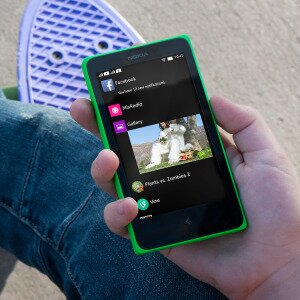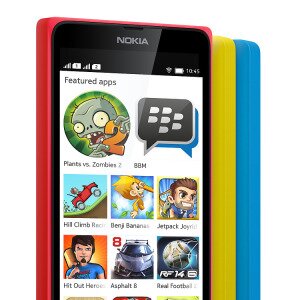
So the Nokia ‘Android’ phone (aka Normandy) isn’t just a rumour. In fact it isn’t even one phone- there are three of these aberrations. Aberration? There is a reason for me to say that. These phones don’t run the Android OS the way most other phones in the market do. They use a forked version of Android. Nokia has used Android’s underlying open source core and has overlaid it with the Metro like tiled UI reminiscent of the Windows Phone OS. These phones are targeted towards emerging markets such as India and they wouldn’t be released in more mature markets such as Western Europe or the USA.
The three dual sim phones that have been announced are X, X+ and XL. Apart from the rather lazy nomenclature, these phones have very little difference. The Nokia X comes with a 4-inch IPS LCD screen, 512MB RAM and a 3-megapixel rear camera. The Nokia X+ adds 768MB RAM to the host of features on the X. The XL comes with a 5-inch display and 5-megapixel rear and 2-megapixel front-facing cameras and has 768 MB RAM.
The Nokia X bears a striking resemblance to the Lumia 520 and the only external difference is the lack of the three capacitive buttons present on the 520. These phones just have a single capacitive button. So Nokia essentially tied the Windows like tiled UI with an old version of the Android OS- an October 2012 Jelly Bean release to be precise. This could slow down the phone considerably since Android KitKat uses about 16% less memory compared to Jelly Bean. In early previews the X has been reviewed to be laggy and quiet slow when compared to similarly priced offerings in the smart phone market.
Nokia didn’t even bother changing the thumbnail for the X+
The phone will have the Nokia Store instead of Google’s Play store and instead of Google’s Maps and Mail, we’ll see similar products from Nokia and Microsoft. Having said that, quite a few apps have already been ported to the new hybrid platform – Facebook, BBM, Line, etc. It can also use the Yandex store and install most Android apps from there.
X is supposed to be the first of many devices that will tie the underlying Android OS to the tiled interface and services from Microsoft. This is an interesting move since this would essentially be selling Microsoft’s services on a non-Windows platform. This could be a game changer in terms of App development from the Microsoft stable.
So what is the big problem? Well, the phone doesn’t make sense beyond the geeky fantasy of seeing Android run on a Lumia 520. Microsoft, which is in the process of taking over Nokia, wouldn’t want to run an entry level phone on a competitor’s platform. They’d be better off designing something fresh for the entry level markets. In fact they just announced hardware improvements with the Windows Phone 8.1 update.
Also, Nokia isn’t the first to create a forked version of Android, Amazon did the same. And the fact that the apps on those Amazon devices are seldom updated as compared to the mainstream Android apps does pose an important question.
With Microsoft takeover happening, only time will tell whether this experiment with Nokia actually works or will it end up being another travesty like the N9.
Even if it succeeds- I wouldn’t look beyond the Moto G for now.




